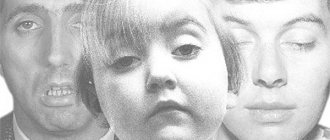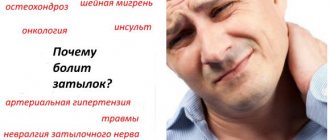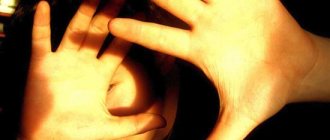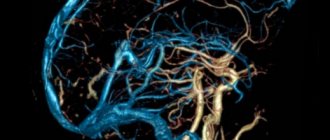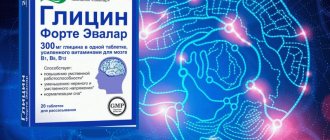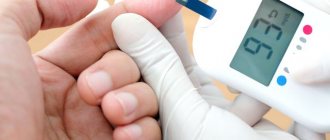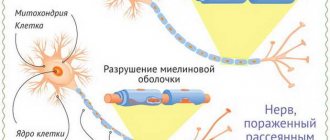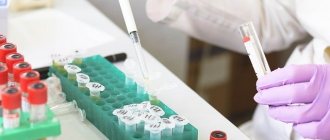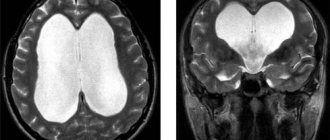As you know, prevention in medicine means a whole range of measures aimed at preventing the occurrence of a particular disease. Many doctors pay great attention to prevention rather than treatment, since it is much easier to prevent a disease than to then deal with its consequences. This is also true in the case of a disease such as vegetative-vascular dystonia, which, however, is not a full-fledged disease, but is a set of various symptoms. High-quality and timely prevention of VSD will allow you to avoid the disease and its possible negative consequences. Further on, how to carry out preventive measures, what should be done, what is best avoided.
Prevention of VSD involves a whole range of measures aimed at preventing the occurrence of the disease
Vegetative vascular dystonia in children (VSD)
VSD is not an independent nosology, but the addition of pathogenic stimuli can lead to psychosomatics (arterial hypertension, cardioneurosis, angina pectoris, asthma, stomach ulcers, etc.). This means that autonomic changes affect the course and development of many diseases, and somatic pathologies can, in turn, cause autonomic disorders.
Although VSD changes the functioning of internal organs, it can be completely restored when regulation is normalized.
VSD in children is a manifestation of decreased vascular activity, and therefore systemic disorders. In medicine, VSD is considered a borderline condition. This diagnosis is made only in Russia and the CIS. In Europe and the USA such a disease does not exist. Moreover, many Russian scientists quite reasonably argue that doctors simply attribute the child’s existing symptoms to VSD if they cannot establish the real cause of their occurrence.
Causes of VSD in children
Often, VSD manifests itself at a time of increased activity of the endocrine system, that is, at the age of 10 years and older. During this period, the thyroid gland, adrenal glands, and sex glands “awaken.” A large number of hormones are released into the blood, which completely determine the emotional state of the child and the functioning of internal organs. This is adolescence with all its hormonal changes. But VSD can occur up to 10 years of age.
Main common provoking factors:
- the rapid pace of technogenic civilization;
- introduction of GMO products;
- hereditary predisposition;
- pathologies during pregnancy;
- features of the constitution;
- skull injuries;
- socio-economic factors (family conflicts, increased pace of life of parents, frequent moves, stress at school);
- chronic infections (tonsillitis, caries, sinusitis);
- diseases with metabolic disorders (diabetes mellitus, hyper- and hypothyroidism);
- physical and mental overload - during which the body requires an increased amount of nutrition and vitamins;
- hypoxia of the body;
- serious illnesses that weaken the functioning of all organs;
- gastrointestinal diseases with impaired absorption of nutrients;
- stress.
The last factor is considered the main cause of dystonia. It is facilitated by school overload due to the complexity of the curriculum.
VSD in infants can occur for other reasons:
- severe pregnancy of the mother;
- birth head injuries;
- viral infections;
- feeding disorders;
- dysbiosis.
Which doctor should I contact?
Parents of children with signs of VSD usually contact a pediatrician. Then the child is examined by specialized specialists - a neurologist, cardiologist, gastroenterologist, psychologist.
Neurologist K.A. talks about VSD. Shlyapnikov:
Author of the article: Alexandra Burguta, obstetrician-gynecologist, higher medical education in the specialty “General Medicine”.
From this article you will learn the features of the course of vegetative-vascular dystonia in children, how this disease manifests itself in childhood (3–12 years). Effective conservative and traditional methods of treatment, prognosis for recovery, and preventive measures are described.
Vegetative-vascular dystonia is a pathological condition of the nervous system, which entails a disorder of other important organ systems: cardiovascular, endocrine, nervous, digestive. According to statistics, every 4th child aged 3 to 12 years is susceptible to this disease. But doctors are confident that in fact more than half of young schoolchildren suffer from symptoms of vegetative-vascular dystonia. The insidiousness of this pathology lies in the extremely complex clinical picture: the variety of seemingly unrelated symptoms significantly complicates the diagnosis of the disease.
Click on photo to enlarge
The danger of vegetative-vascular dystonia in childhood is the increased risk of developing severe complications:
- complex psychosomatic diseases (hypertension, ulcers, cholelithiasis, pancreatitis, obesity, cardiac dysfunction);
- psychological and physical disorientation of the child in society and space;
- periodic crises - a temporary exacerbation of symptoms (a sharp deterioration in the physical well-being and emotional state of a small patient).
This disease can be treated by a pediatrician, neurologist, or cardiologist.
Symptoms
Symptoms of VSD may be:
- hidden - appear during provoking moments - excitement, stress;
- crisis – sudden when feeling well;
- permanent - permanent and daily.
Vagotonia is the predominance of parasympathetic regulation. Causes hypochondriacal complaints of this kind:
- lethargy and fatigue;
- poor memorization of material;
- dyssomnia;
- indecision, timidity;
- depressive tendencies;
- cold, damp skin;
- intolerance;
- decreased appetite combined with excessive body weight;
- intolerance to stuffy rooms;
- chilliness;
- periodic feeling of a “lump” in the throat and lack of air;
- frequent sighs;
- dizziness to the point of fainting;
- nausea, skin marbling, acrocyanosis,
- increased oily skin, tendency to swelling under the eyes;
- increased urination;
- hypersalivation;
- spastic constipation.
Cardiovascular disorders are manifested by cardialgia, bradyarrhythmia, and a tendency to hypotension.
The ECG shows sinus bradycardia (bradyarrhythmia).
Sympathicotonia is characterized by:
- mood variability;
- decreased pain threshold;
- loss of concentration;
- sparkle of eyes;
- tendency to exophthalmos;
- often feeling hot;
- the type of constitution is often asthenic;
- increased appetite, dry and pale skin, white dermographism;
- cold hands and feet;
- numbness and paresthesia in the morning;
- at times causeless fever;
- poor heat tolerance;
- polyuria.
We recommend: Dr. Komarovsky - colic in a newborn, what to do?
From the heart:
- tachycardia;
- high blood pressure, but the size of the heart on the ECG is normal.
Respiratory disturbances and vestibular disorders are not typical in sympathicotonia.
Symptoms in young children include:
- fever for no reason;
- tearfulness;
- deep and frequent sighs;
- falling asleep quickly during the day in an unnatural position;
- with nervous overstrain, heavy sweating;
- rashes of various kinds.
Children with VSD have reduced adaptation, they are more susceptible to infections and colds, are irritable, whiny, fearful and non-communicative. Strongly attached to mother. They gain weight poorly.
Bad habits: impact on blood vessels
The rule of drinking alcoholic beverages on holidays has firmly and deeply taken root in our culture. Most compatriots neglect drinking culture and arrange a “holiday” for themselves every weekend. Often, the abuse of alcoholic beverages causes a real blow to the blood vessels and often becomes the cause of the development of VSD of the mixed and hypertensive type. In addition to blood vessels, almost all body systems are affected.
Smoking cigarettes causes short-term vasospasm. Almost all heavy smokers have symptoms of VSD. But for most of them, giving up a bad habit is difficult; they prefer to get sick and feel bad rather than give up cigarettes.
The first rule for preventing VSD of the hypertensive type: almost complete abstinence from alcoholic beverages and, preferably, from cigarettes. If, after completely quitting alcohol and normalizing nutrition, the patient’s symptoms do not leave the patient, it is necessary to completely stop smoking. Each person's blood vessels react individually to nicotine and tar contained in cigarettes. And if for one person such influence is acceptable, then for another it will be simply deadly.
Treatment of VSD
VSD is diagnosed if there is no evidence of damage to organs of another nature. The effectiveness of treatment is achieved by combining medications with alternative methods and prevention. Treatment of VSD in children always begins with non-drug methods of influence.
Manual therapy, water procedures and physiotherapy (bromine electrophoresis and electrosleep, massage of the collar area and head, acupuncture) are recommended. Herbal medicine offers herbs with a sedative effect:
- lure;
- chamomile;
- Melissa;
- Eleutherococcus;
- Aralia;
- motherwort;
- ginseng;
- valerian;
- Leuzea;
- hawthorn.
A mandatory element of non-drug effects is adherence to the regimen. This is optimization of the educational load (lessons with organized breaks), fresh air with physical activity, good sleep, balanced nutrition, psychotherapy, reducing time spent near the computer and other electronic information devices (mobile phone, TV). A visit to a psychologist is recommended to stabilize the mental state of children, help with phobias and self-doubt. Sports are welcome: swimming, cycling, skiing, skating, horse riding.
Medicines are not always prescribed by doctors and only in combination with non-drug effects. All products are individual. There is no “universal” set or template. The emphasis is on sedatives, tranquilizers and antidepressants. Vitamins, nootropics, angio- and cardioprotectors, and biostimulants are also prescribed.
Diagnostics
Diagnosing VSD is important in order to exclude other diseases with similar manifestations: nervous, cardiac, psycho-emotional disorders, etc. To make a diagnosis, modern medicine uses various methods, especially taking into account the diversity of symptoms. After all, the syndrome affects many body systems. Parents need to show their child to a pediatrician who will conduct an examination, prescribe the necessary diagnostic procedures, and refer him to specialists.
Monitoring changes in blood pressure, cardiac examination (ECG), and laboratory tests of blood and urine are usually practiced. Depending on the manifestations of VSD, the child or adolescent will be examined by a cardiologist, gastroenterologist, endocrinologist, neurologist, or psychotherapist.
To clarify the diagnosis, ultrasound, MRI, electroencephalography and other methods can be performed. And, of course, the doctor will question the patient and his parents in detail about recent events that could have led to worries, about past illnesses that weakened the body.
Tips for parents
One of the main measures is to create an emotionally comfortable environment, and only parents can do this. Before any treatment begins, the baby should be protected from stress. You should stop swearing, there should be smooth, friendly relations in the family. The child should have a feeling of security in the family and a positive attitude.
You cannot brush your child off; you should support him, help him resolve conflicts and problems that arise, even seemingly trivial ones.
It is important to plan a schedule of study and rest, entertainment and physical activity. Harmonious development of personality also means normalization of the tone of the nervous system.
Being under stress
Serious depression, anxiety disorders, constant irritation due to lack of understanding from loved ones - these reasons often aggravate the course of existing cardiovascular diseases. VSD can also begin for the first time precisely during a period of nervous shock and increased anxiety.
The best prevention of VSD during periods of chronic stress is to get as much sleep as possible. It is necessary to contact a neurologist or psychiatrist and ask for a prescription for an active sedative (calming) drug or sleeping pill (if the patient is suffering from insomnia). Without healthy, long, sound sleep, you will never get rid of stress.
If you can’t go to the doctor, you should try taking a course of the over-the-counter weak tranquilizer Afobazol. There is another effective homeopathic remedy that is not addictive and is very cheap - this is the soothing tea “Fitosedan”.
Prevention
Prevention should be carried out with an emphasis on general strengthening of the body:
- from an early age, hardening the child - dousing with water, walking barefoot, sleeping with the transom open;
- accustoming to a clear regime;
- avoiding physical inactivity;
- an interesting hobby instead of endlessly sitting at the computer.
The condition of dystonia is not fatal, but it can worsen the quality of life, interfering with normal development and communication with others.
VSD in children is multifaceted, it combines symptoms of dysfunction of a variety of organs and systems. The pathology must be treated, but with what? According to Komarovsky, when diagnosing VSD, one should think not about the “golden pill” that will immediately remove all the symptoms, but about changing lifestyle, first of all.
Chronic fatigue and physical exhaustion
Heavy and prolonged work causes vascular spasms. Often people, in an effort to earn money, no longer give themselves rest and try to work seven days a week. This approach is unacceptable: every person should sleep at least eight hours a day (and at night) and not be in an upright position for more than ten hours.
No matter how strange it may sound, often the most effective prevention of VSD in adults is to work less and rest more. Moreover, rest should not be in the gym (visits to which should also be limited, since this is also a serious physical activity), but at home, lying on the sofa or in a hammock, in peace and quiet.

